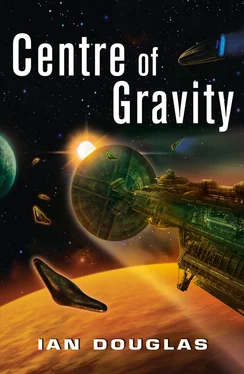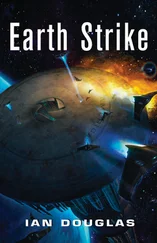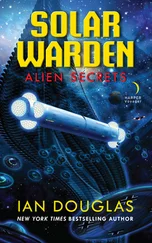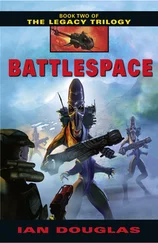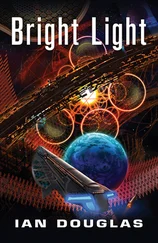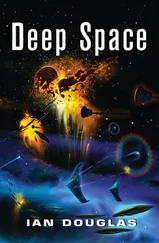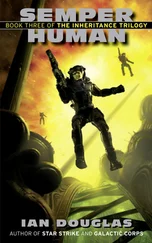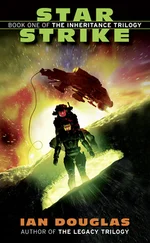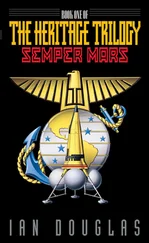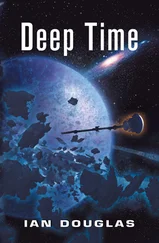The All of Us race was unaccustomed to dealing with other sentient species. One of the primary reasons for this was, simply, their size; by almost any standards, the H’rulka were giants.
An adult H’rulka consisted of a floatation gas bag measuring anywhere from two to three hundred meters across, with brain, locomotion and feeding organs, sensory apparatus and manipulators clustered at the bottom. Most other sentient species with which they’d had direct experience possessed roughly the same size and mass ratio to a H’rulka as an ant compared to a human.
When the H’rulka thought of other life forms as “vermin,” the thought was less insult than it was a statement of fact, at least as they perceived it. Within the complex biosphere of the H’rulka homeworld, there were parasites living on each All of Us colony that were some meters across. H’rulka simply found it difficult to imagine creatures as intelligent that were almost literally beneath their notice in terms of scale.
“Commence acceleration,” Ordered Ascent directed. “We will move into the region of heavy radio transmission, and destroy targets of opportunity as they present themselves.”
The H’rulka warship, more than twenty kilometers across, began falling toward Sol, the inner system, and Earth.
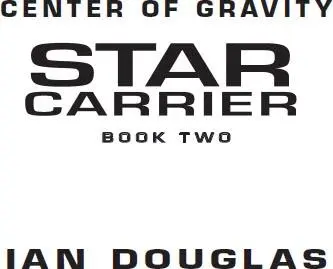
To Brea, my guiding star
Table of Contents
Vermin …
Title Page
Dedication
Prologue
Chapter One
Chapter Two
Chapter Three
Chapter Four
Chapter Five
Chapter Six
Chapter Seven
Chapter Eight
Chapter Nine
Chapter Ten
Chapter Eleven
Chapter Twelve
Chapter Thirteen
Chapter Fourteen
Chapter Fifteen
Chapter Sixteen
Chapter Seventeen
Chapter Eighteen
Chapter Nineteen
Chapter Twenty
Chapter Twenty-One
Chapter Twenty-Two
Chapter Twenty-Three
Chapter Twenty-Four
Chapter Twenty-Five
Chapter Twenty-Six
Epilogue
By Ian Douglas
Copyright
About the Publisher
12 December 2404
Emergence, Arcturus System
36.7 light years from Earth
0310 hours, TFT
The recon probe emerged from its Alcubierre bubble of tightly warped space, bleeding off excess velocity in a burst of high-energy photons. An artificial gravitational singularity the size of a small dust particle and as massive as a star flicked on and off a few meters beyond the craft’s bulbous nose, dragging it forward with an acceleration of nearly five thousand standard gravities. At that rate, the craft would be crowding the speed of light within another one hundred minutes.
Only slightly larger than a VG–10 Krait smart missile, the ISVR–120 probe was too small to carry sentient organics; its pilot was a Gödel 2500 artificial intelligence packed into the solid-state circuitry that filled the pod’s core and so, technically, could be said to take up no space at all. Certainly it needed none of the bulky life-support equipment necessary for organic life.
The AI was called Alan, named after Alan Turing, one of the giants in the development of the first computers four and a half centuries earlier.
Within seconds of the probe craft’s emergence from the warp bubble, Alan had scanned the system ahead, a volume of space dominated by a single bloated and brilliant orange star. The Confederation Naval Standard Ephemeris entry on the star resided within Alan’s surface memory.
STAR:Alpha Boötis
COORDINATES:RA: 14 h15 m39.7 sDec: +19˚ 10’ 56” D 11.24p
ALTERNATE NAMES:Arcturus, Alramech, Abramech, 16 Boötes
TYPE:K1.5IIIFe–0.5
MASS: 3.5 Sol; RADIUS:25.7 Sol; LUMINOSITY:210 Sol (Optical 113 Sol)
SURFACE TEMPERATURE:~4300 oK
AGE:9.7 billion years
APPARENT MAGNITUDE (SOL):–0.04; ABSOLUTE MAGNITUDE:–0.29
DISTANCE FROM SOL:36.7 LY
PLANETARY SYSTEM:6 planets, including 1 Jovian and 5 sub-Jovian gas giants, plus 47 dwarf planets and 65 known satellites, plus numerous planetoids and cometary bodies.
One gas giant satellite, Jasper, is of interest with somewhat earthlike conditions due to gravitational/tidal effects. …
Arcturus, depending on how one measured such things, was the third or fourth brightest star in the night skies of Earth, a bright orange point at the base of the kite-shape of the constellation Boötis. From Alan’s emergence point some eighteen astronomical units out, Arcturus was a dazzling gold-orange beacon 113 times brighter than Sol would have been at the same distance. At infrared wavelengths, Arcturus was even brighter, flooding ambient space with sullen heat.
Alan’s primary objective lay almost directly beyond the star from his emergence point. His final approach would be masked by the star’s glare … if everything went right.
By the time Alan had traveled a third of the distance toward Arcturus—some 900 million kilometers—he was moving at a hair better than 99 percent of the speed of light. Velocity transformed his view of the surrounding universe, compressing it into a circle of light dead ahead—most of it infrared light from Arcturus, blue-shifted into optical wavelengths. The AI’s sensory correction program, however, was able to untangle the flood of speed-distorted light into its separate components and correct for the distortion. His velocity also distorted time, by seven to one at this velocity. Each passing minute for Alan was seven in the universe outside; it created the illusion that he was hurtling deeper into the Arcturus system much faster than he actually was.
Some two hundred minutes objective after entering the Arcturus system, Alan passed the star, skimming the giant’s photosphere. The probe’s electromagnetic shielding deflected the worst of ionizing radiation but had little effect on radiant heat. Briefly, the probe’s hull struggled with temperatures approaching 900 degrees Celsius. Nanotechnic currents within the hull laminates helped distribute the heat, radiating much of it harmlessly astern.
And then the star—its monstrous, turbulent, and roiling girth nearly twenty-six times larger than Sol’s—fell away behind, red-shifting abruptly to a near-invisibility, illuminated at optical wavelengths solely by red-shifted X-rays.
Alan’s objective now lay directly ahead, 20 astronomical units out.
Long-range detectors were already picking up ships, enemy ships, though at this distance those images were more than two and a half hours old. As expected, most of the enemy targets were grouped closely around a Jupiter-sized gas giant, listed in the database as Alchameth, and its Earth-sized moon, Jasper. Orbiting the moon was Arcturus Station, a terraforming base established by the Confederation three years ago to begin the process of turning Jasper into a human-habitable world.
But fourteen months ago, the Turusch had come. A Confederation naval task force stationed here had been all but wiped out, the orbital station had been captured. So far as could be gathered, nearly six thousand technicians, planetologists, xenologists, terraform specialists, and first-down colonists on the station—men, women, and children—had been butchered.
The probe’s sensors were picking up the faint reflected gleams of Arcturus Station two hundred kilometers above Jasper, and two Beta-class Turusch battleships hanging close alongside, each a small asteroid, crater-pocked and immense. Numerous smaller vessels swarmed in the giants’ shadows—Juliet- and Kilo-class cruisers.
Читать дальше
